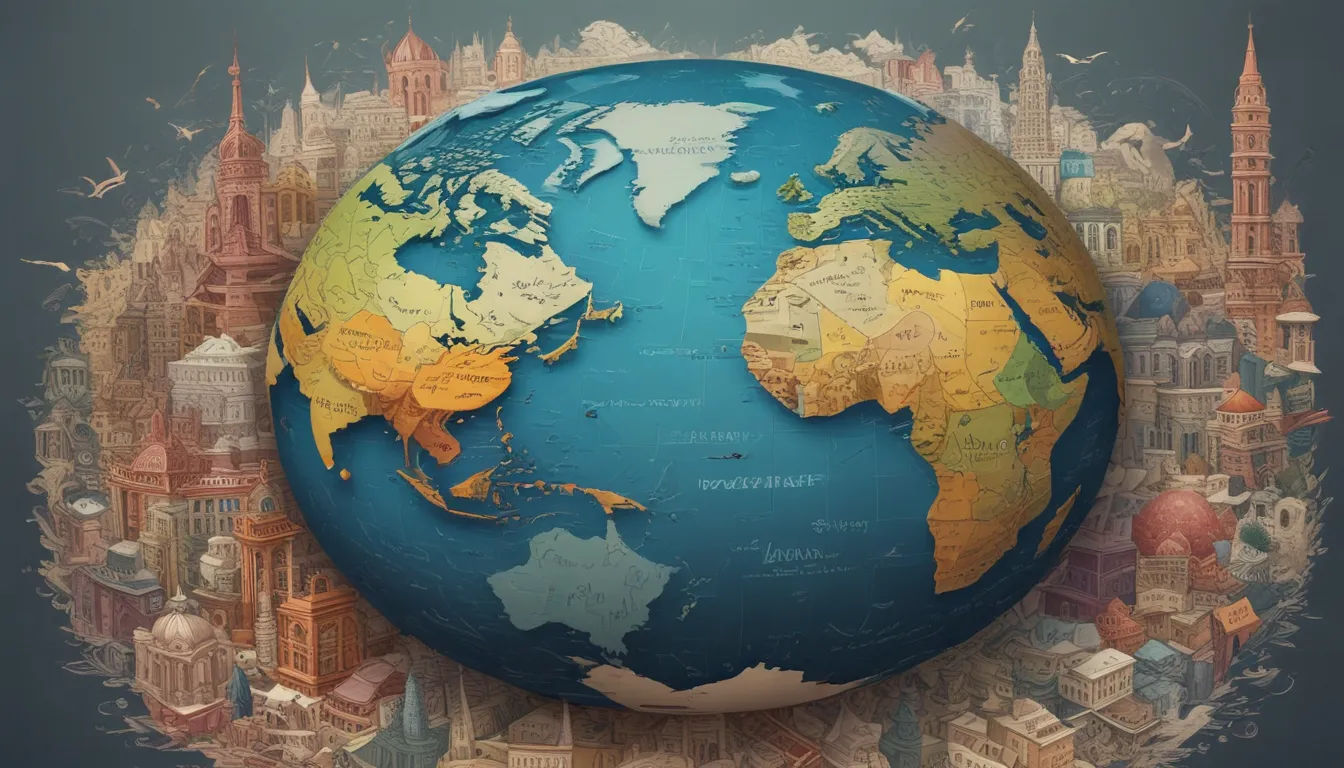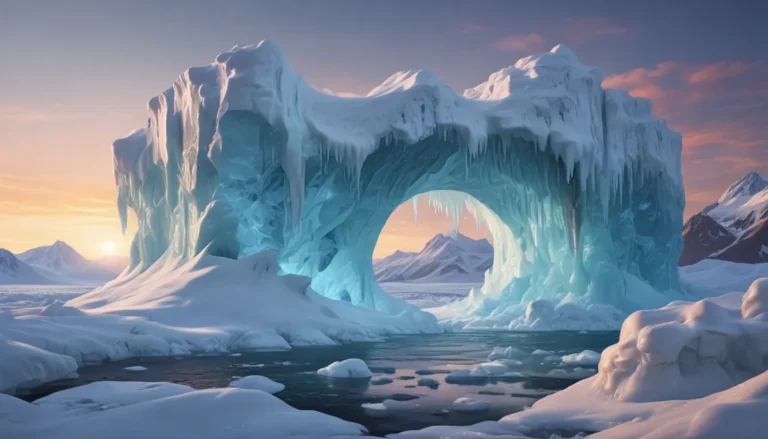A Note About Images: The images used in our articles are for illustration purposes only and may not exactly match the content. They are meant to engage readers, but the text should be relied upon for accurate information.
Language is a captivating element of human existence intricately intertwined with geographical locations. The evolution and spread of languages across different regions offer valuable insights into the history, culture, and diversity of our world. From the sheer number of languages spoken globally to the profound impact of colonization on linguistic patterns, language geography reveals a wealth of mind-blowing facts. In this article, we will explore 13 awe-inspiring insights that illuminate the fascinating relationship between languages and geography. Whether you are a language enthusiast, a history aficionado, or simply curious about the world around you, prepare to be amazed by the intriguing connections between languages and their geographical context. So, fasten your seatbelts and embark on a linguistic journey that will immerse you in the vibrant tapestry of global communication.
Exploring the World of Language Geography
Language Diversity: A Cultural Kaleidoscope
Discover the richness of linguistic diversity as we unveil the stunning fact that approximately 7,000 languages are spoken worldwide. From the melodious tones of Mandarin Chinese to the rhythmic Swahili expressions, each language embodies the unique culture and traditions of its speakers, making our world a marvelously diverse and enthralling place to explore.
Tracing Language Families: Unveiling Linguistic Origins
Languages across the globe can be grouped into families based on common origins, creating intricate linguistic connections. The Indo-European family, encompassing languages like English, Spanish, Hindi, and Russian, stands as the largest language family, showcasing the intertwined histories and shared roots of these diverse languages.
Embracing Official Languages: A Symphony of Tongues
In certain countries, multiple languages coexist as official languages, reflecting the cultural tapestry of the region. Take Switzerland, for instance, with its four official languages of German, French, Italian, and Romansh, serving as a harmonious testament to linguistic diversity and inclusivity.
Unveiling Endangered Languages: A Race Against Time
Regrettably, numerous languages face the threat of extinction, with one language estimated to vanish every two weeks. This alarming trend underscores the urgent need to preserve and safeguard linguistic diversity for future generations through concerted conservation efforts.
Illuminating the Dynamics of Linguistic Evolution
Language is a dynamic entity that undergoes constant changes over time, adapting through processes like word borrowing, pronunciation shifts, and grammatical evolutions. These evolutionary mechanisms shape the cultural identity of a language and its speakers, mirroring the ever-changing landscape of human communication.
Language as a Cultural Compass: Navigating Identity
Delve into the profound role of language in shaping cultural identity, providing communities with a medium to express their unique beliefs, traditions, and values. Language serves as a cultural touchstone, fostering a deep sense of belonging and connection within a community.
Language Hotspots: Oases of Linguistic Diversity
Explore regions known as language hotspots, where a multitude of languages coexist in close proximity, creating a vibrant tapestry of linguistic diversity. Journey to the Pacific island of Papua New Guinea, a renowned language hotspot boasting over 800 indigenous languages, each echoing the heritage of its speakers.
Sign Languages: A World of Silent Expression
Uncover the complexity of sign languages as complete linguistic systems utilized by deaf communities, blending grammar, gestures, and facial expressions. These intricate forms of communication showcase the richness and diversity of human language, transcending auditory boundaries.
Nurturing Brain Development Through Language
Embark on a journey to explore the cognitive benefits of learning multiple languages from a young age, enhancing brain development, cognitive skills, and problem-solving abilities. Language learning emerges as a powerful tool for nurturing intellectual growth and expanding neural pathways.
Interweaving Language and Geography: Mapping Diversity
Discover how geographical factors influence language diversity, shaping unique dialects and languages in isolated regions. Limited contact with neighboring communities leads to linguistic isolation, fostering the emergence of distinct linguistic identities within specific geographic locales.
Fostering Language Revitalization: Preserving Heritage
Witness global efforts aimed at revitalizing endangered languages and stemming their slide into oblivion. Initiatives such as language immersion programs, documentation projects, and community engagement endeavors play a pivotal role in safeguarding linguistic diversity and heritage.
Embracing Lingua Francas: Bridges of Communication
Unveil the concept of lingua francas, common languages utilized for communication among individuals with varying native tongues. From English in international business to French in diplomacy, these universal languages serve as bridges that transcend linguistic barriers, fostering global communication and cooperation.
Language as a Window to Worldview: Shaping Perspectives
Explore how language molds our perceptions and interpretations of the world, imbuing us with unique vocabulary and concepts that color our understanding of reality. Each language offers a distinct lens through which we view the world, broadening our cultural horizons and enriching our experiences.
Embracing the Intricacies of Language Geography
In conclusion, the field of language geography unravels the intricate relationship between languages and the physical world, offering profound insights into the diverse tapestry of human communication. From the global distribution of language families to the influence of geographical barriers on linguistic diversity, language geography unveils a treasure trove of knowledge waiting to be explored. Language serves as a profound conduit not just for communication but also for culture, history, and environmental interactions. By unraveling the geographical nuances of languages, we gain a deeper appreciation for the interconnectedness and diversity of human societies. The dynamic interplay between languages and their surroundings, whether through contact with neighboring tongues or adaptation to environmental conditions, presents an enlightening mosaic of human communication.
Frequently Asked Questions (FAQs)
Q: What is language geography?
A: Language geography is the study of how languages are distributed across different geographical regions and the factors that influence their development and evolution.
Q: Why is language geography important?
A: Language geography helps us understand the relationship between language and the physical world, shedding light on the influences of geography, history, culture, and environment on the diversity and development of languages.
Q: How does language geography explain the distribution of language families?
A: Language geography examines the similarities and differences among languages, tracing their origins and historical connections, to understand how language families spread and diversify across different regions.
Q: Are there geographical barriers that impact linguistic diversity?
A: Yes, geographical barriers such as mountains, oceans, and deserts can hinder the interaction and exchange of languages between communities, leading to the development of unique dialects or entirely new languages.
Q: How does language geography relate to culture and history?
A: Language geography reflects culture and history, revealing how languages adapt and evolve based on cultural practices and historical events. It provides insights into societal interactions and influences over time.
Q: Does language geography impact language preservation?
A: Absolutely, language geography plays a vital role in preserving endangered languages by identifying areas in need of revitalization efforts and facilitating the conservation of linguistic diversity through documentation and conservation initiatives.
## In Conclusion
As we navigate the vibrant realm of language geography, we unravel the intrinsic bond between languages and their geographical roots. Each linguistic thread woven across the globe tells a unique story of cultural heritage, historical evolution, and environmental adaptation. Language serves as an enduring beacon of human expression, connecting us across vast distances and bridging diverse communities. By delving into the nuances of language geography, we gain a deeper appreciation for the tapestry of global communication, celebrating the diverse voices that echo through the corridors of time. Let us continue to explore, learn, and embrace the rich complexities of language geography, unlocking the mysteries of linguistic diversity and human connection. Journey forth into this captivating realm where words transcend boundaries and cultures intertwine, enriching our understanding of the world we inhabit.






